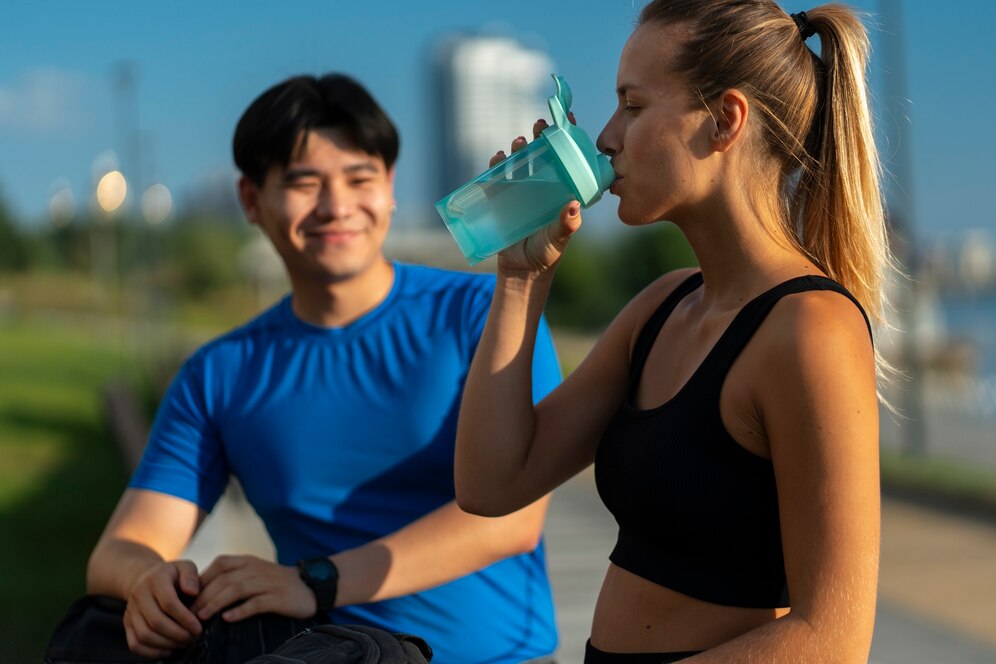
Imagine this: you’re 20 miles into a marathon, the sun’s beating down, your legs feel like they’re made of lead, and your mouth’s as dry as the Sahara. You reach for your water bottle—empty. Panic sets in. Your pace slows, your head spins, and suddenly, that finish line feels a million miles away. Sound familiar? If you’re an endurance athlete, you’ve likely danced with dehydration at some point. It’s a sneaky beast that can derail even the most disciplined training plan. But here’s the good news: with the right hydration strategies, you can outsmart it and keep your performance on point. In this deep dive, we’ll explore everything you need to know about hydration for endurance sports—science-backed tips, real-world advice, and a few hard-earned lessons from the trail. Let’s get started.
Why Hydration Matters More Than You Think
Hydration isn’t just about sipping water when you’re thirsty—it’s the cornerstone of endurance performance. Your body is roughly 60% water, and during long bouts of exercise, you’re losing it faster than you can say “personal best.” Sweat, heat, and exertion can deplete your fluids, leading to a cascade of nasty effects: reduced stamina, muscle cramps, dizziness, and even heatstroke. According to the American College of Sports Medicine, losing just 2% of your body weight in fluids can tank your performance by up to 20%. That’s the difference between a podium finish and a DNF.
I learned this the hard way during my first ultra-marathon—a grueling 50K in the mountains. I thought I could “tough it out” with a single handheld bottle. By mile 25, I was seeing stars and begging a fellow runner for a sip of their electrolyte drink. Don’t be me. Hydration isn’t just about survival; it’s about thriving. So, how do you get it right? Let’s break it down.
The Science of Sweat: Understanding Your Body’s Needs
Every athlete sweats differently. Factors like body size, fitness level, climate, and genetics play a role in how much fluid you lose. On average, endurance athletes lose 0.5 to 2 liters of sweat per hour during intense exercise, per a study from the Journal of Sports Sciences. That’s a lot of liquid to replace! But it’s not just water you’re losing—sweat also contains electrolytes like sodium, potassium, and magnesium, which are critical for muscle function and energy production.
To figure out your sweat rate, try this simple test: weigh yourself naked before and after a one-hour run (without drinking anything during). The difference in pounds is roughly the amount of fluid you’ve lost in pints (1 pound = 1 pint). For example, if you lose 2 pounds, you’re sweating out about 32 ounces per hour. Knowing this number helps you tailor your hydration plan. But don’t stop there—consider the conditions. A humid summer day will hit you harder than a cool morning jog.
Pre-Hydration: Start Before You Sweat
The best hydration strategy begins before you even lace up your shoes. Pre-hydration primes your body for the work ahead, reducing the risk of starting in a deficit. The Gatorade Sports Science Institute recommends drinking 16–20 ounces of water or an electrolyte drink 2–3 hours before exercise. This gives your body time to absorb the fluids and get rid of any excess (hello, pre-race bathroom stop).
I’ve found a little ritual helps: the night before a long run, I’ll sip on a homemade mix of water, a pinch of sea salt, and a squeeze of lemon. It’s not fancy, but it works. On race morning, I’ll down a bottle of water with a splash of coconut water for natural electrolytes. The goal isn’t to chug gallons—just to start with a full tank. Overdoing it can leave you feeling bloated and sloshy, which is just as bad as starting dehydrated.
During the Grind: Hydration on the Move
Once you’re in the thick of it, staying hydrated becomes a balancing act. Drink too little, and you’ll bonk. Drink too much, and you risk hyponatremia—a dangerous condition where your blood sodium levels drop too low. The general guideline from the International Marathon Medical Directors Association is to drink to thirst, but for endurance efforts lasting over an hour, a more structured plan works better.
Here’s what I’ve learned from years of trial and error:
- Aim for 4–8 ounces every 15–20 minutes: This keeps a steady flow without overwhelming your stomach.
- Mix water with electrolytes: Plain water is great, but for runs over 90 minutes, you need sodium and potassium to replace what you’re sweating out. Brands like Nuun or Skratch Labs make portable tablets and powders that taste good and pack a punch.
- Use gear to your advantage: Hydration vests, belts, or handheld bottles make sipping easier. I swear by my Salomon hydration vest—it’s like a camel hump for humans.
One tip: practice your hydration strategy during training. The last thing you want is to try a new drink on race day and spend the next 10 miles looking for a porta-potty.
Post-Exercise: Refilling the Tank
Crossing the finish line doesn’t mean you’re done hydrating. Recovery is where the magic happens, and replacing lost fluids is key to bouncing back. The National Athletic Trainers’ Association suggests drinking 16–24 ounces of fluid for every pound lost during exercise. Weigh yourself post-run to gauge your needs, and don’t just chug water—add some electrolytes and a bit of carbs to speed up recovery.
After my last marathon, I tried a recovery drink with a 4:1 carb-to-protein ratio (think chocolate milk or a smoothie with banana and peanut butter). It helped me feel human again faster than water alone. Timing matters too: aim to start rehydrating within 30 minutes of finishing. Your body’s like a sponge then, ready to soak up what it needs.
Electrolytes vs. Water: What’s the Difference?
Let’s clear up a common confusion: water hydrates, but electrolytes keep things running smoothly. Water replaces fluids, while electrolytes—sodium, potassium, magnesium—help your body absorb that water, maintain nerve function, and prevent cramps. Think of water as the base and electrolytes as the seasoning.
Comparison Table: Water vs. Electrolyte Drinks
| Factor | Water | Electrolyte Drinks |
|---|---|---|
| Best For | Short runs, daily hydration | Long runs, high-sweat activities |
| Replaces Fluids | Yes | Yes |
| Replaces Sodium | No | Yes (varies by brand) |
| Calories | 0 | 10–50 per serving |
| Cost | Free (tap) | $1–3 per serving |
| Taste | Neutral | Flavored (can help you drink more) |
| Example Products | Tap, bottled water | Gatorade, Nuun, Skratch Labs |
For efforts under an hour, water’s usually fine. But for anything longer—or if you’re a salty sweater (you know, those white streaks on your shirt)—electrolyte drinks are your best friend. Test a few brands to see what sits well in your stomach. I’m partial to Tailwind Nutrition—it’s easy on the gut and tastes like a treat.
Environmental Factors: Adjusting for Heat, Humidity, and Altitude
Your hydration needs shift depending on where you’re training or racing. Heat and humidity increase sweat rates, while altitude can dehydrate you faster due to lower oxygen levels and drier air. A study from the University of Colorado found that athletes at high altitudes lose fluids 20–30% faster than at sea level.
In hot conditions, bump up your fluid intake by 10–20% and lean on electrolyte drinks. I ran a desert half-marathon once and underestimated the heat—big mistake. By mile 8, I was dizzy and desperate for shade. Now, I carry extra fluids and wear a cooling bandana when the mercury climbs. In high-altitude races, start hydrating a few days before and sip consistently during the event. And don’t forget cold weather—dry air can dehydrate you too, even if you’re not sweating buckets.
Common Hydration Myths: Don’t Fall for These
There’s a lot of bad advice floating around. Let’s debunk a few myths:
- Myth 1: You need to drink 8 glasses of water a day: This isn’t one-size-fits-all. Your needs depend on activity, climate, and diet. Listen to your body.
- Myth 2: Thirst means you’re already dehydrated: Not true. Thirst is your body’s early warning system, not a sign of doom.
- Myth 3: More water is always better: Overhydration can lead to hyponatremia, especially if you’re not replacing sodium. Balance is key.
I used to think chugging water all day was the answer—until I spent a 10K glued to the bathroom line. Moderation and timing are everything.
Gear and Tools to Make Hydration Easier
The right gear can make or break your hydration game. Here are some tried-and-true options:
- Hydration Packs: Vests like the Nathan VaporKrar hold 1–2 liters and sit snug so they don’t bounce.
- Handheld Bottles: The Amphipod Hydraform is great for shorter runs—just don’t overfill it.
- Collapsible Cups: For races with aid stations, a Hydrapak SoftFlask fits in your pocket and reduces waste.
- Electrolyte Tabs: Keep a stash of SaltStick Fastchews for quick sodium hits.
Invest in what works for your body and race distance. And pro tip: test your gear in training, not on race day.
Nutrition and Hydration: A Match Made in Endurance Heaven
Hydration doesn’t work in a vacuum—pair it with the right nutrition for best results. Carbs help your body absorb water faster, while protein aids in recovery. During long efforts, I’ll sip an electrolyte drink with a gel every 45 minutes to keep my energy and fluids in check. Post-run, a smoothie with fruit, protein powder, and coconut water does wonders.
The American Council on Exercise suggests a 3:1 carb-to-protein ratio post-exercise for optimal recovery. Experiment with real foods too—watermelon, oranges, and salty pretzels can double as hydration and fuel.
FAQ: Your Burning Hydration Questions Answered
How do I know if I’m dehydrated during a run?
Look for signs like a dry mouth, dark urine, dizziness, or fatigue that doesn’t match your effort. If your pace drops and you feel off, slow down and sip fluids.
Can I overhydrate?
Yes. Drinking too much water without electrolytes can lead to hyponatremia, causing nausea, confusion, or worse. Aim for balance—4–8 ounces every 15–20 minutes during exercise.
What’s the best electrolyte drink for endurance athletes?
It depends on your taste and stomach. Skratch Labs and Tailwind are popular for their natural ingredients. Test a few during training to find your go-to.
How much should I drink before a race?
About 16–20 ounces of water or an electrolyte drink 2–3 hours before, then sip another 8–10 ounces 30 minutes prior. Don’t overdo it—listen to your body.
Does coffee dehydrate you?
Not really. While caffeine is a mild diuretic, its effect is minimal for most people. A pre-run cup won’t ruin your hydration if you’re drinking enough fluids overall.
Conclusion: Hydration as Your Superpower
Hydration isn’t glamorous, but it’s a game-changer for endurance athletes. It’s the difference between hitting the wall and smashing through it, between a DNF and a PR. From pre-hydration to post-race recovery, every sip counts. Start by understanding your sweat rate and tailoring your intake to your body’s needs. Experiment with electrolyte drinks, gear, and nutrition to find what works for you. And don’t just wing it—practice your strategy in training so you’re dialed in on race day.
Reflecting on my own journey, I’ve gone from a dehydrated mess to someone who can run 50 miles without hitting the panic button. It took time, a few mistakes, and a lot of learning. But now, I see hydration as a superpower—one that’s in my control. So, next time you’re gearing up for a long haul, make hydration your priority. Fill that bottle, pack those electrolytes, and go chase your limits. Your body will thank you—and that finish line? It’ll be waiting. What’s your next step? Maybe it’s calculating your sweat rate or trying a new drink. Whatever it is, take it one sip at a time. You’ve got this.
